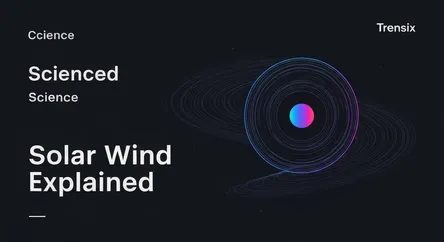Science
Solar Wind Explained

Discover solar wind, the stream of charged particles from the Sun that causes auroras and can impact technology on Earth. Learn why it matters.
What is it?
Solar wind is a continuous stream of charged particles, primarily electrons and protons, released from the Sun's upper atmosphere, called the corona. This plasma travels outward through the solar system at speeds ranging from 250 to 750 kilometers per second. The Sun's immense heat and magnetic field accelerate these particles, creating a constant flow that permeates space. This phenomenon is a key component of what is known as space weather, influencing the entire solar system, including the magnetic fields of planets like Earth.
Why is it trending?
The topic is trending due to the Sun entering a period of maximum activity in its current 11-year cycle, known as Solar Cycle 25. This peak activity leads to more frequent and intense solar flares and coronal mass ejections (CMEs), which significantly strengthen the solar wind. Consequently, we are seeing more dramatic space weather events, including vibrant auroras visible at much lower latitudes than usual, capturing public interest and media attention worldwide.
How does it affect people?
Solar wind's most beautiful effect is creating the aurora borealis (Northern Lights) and aurora australis (Southern Lights) when its particles interact with Earth's magnetic field. However, intense solar wind can trigger geomagnetic storms that disrupt our technological infrastructure. These storms can interfere with satellite communications, damage GPS signals, overload power grids causing blackouts, and pose radiation risks to astronauts in orbit. Understanding and predicting solar wind is crucial for protecting our technology-dependent society.